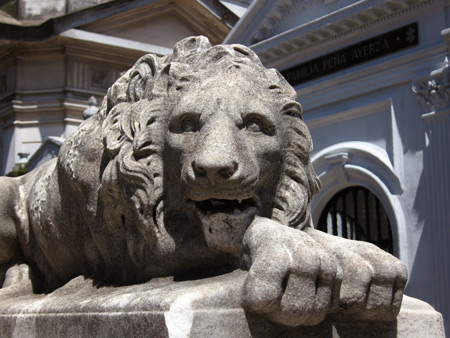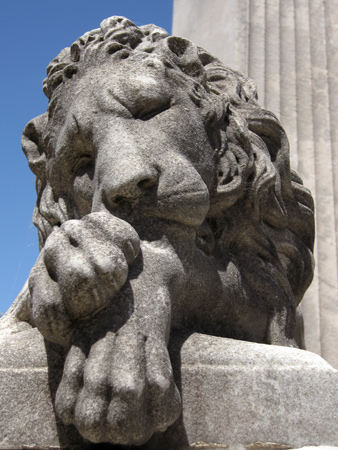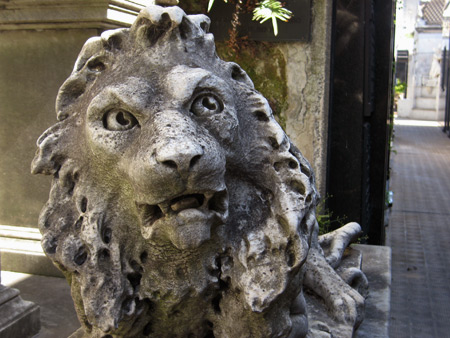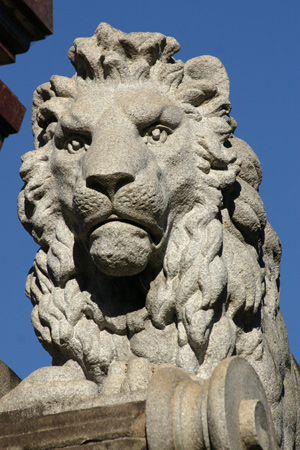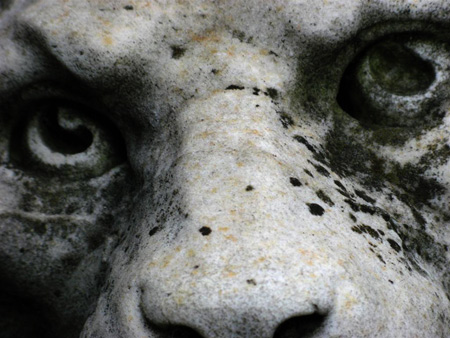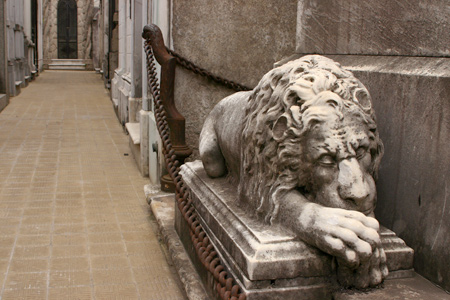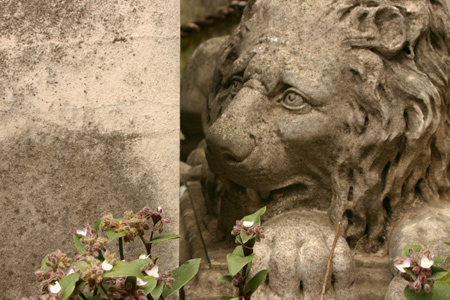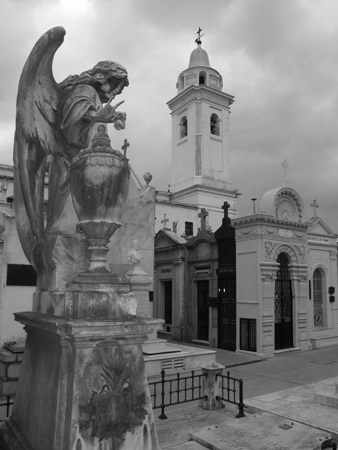
Documenting Recoleta Cemetery in Buenos Aires since 2007
Like their Irish counterparts, French Catholics could also be buried in Recoleta Cemetery. There are even fewer of these tombstones left than the English-language ones.
The plaque below reads: “A Paul Ribeaumont, ses admirateurs et ses amis, 1851—1856” (To Paul Ribeaumont, [from] his admirers & friends, 1851—1856). Obviously it was given on the fifth anniversary of his death. The tomb has been chopped off by another family to the right who wanted a little extra space. No one seems to mind:
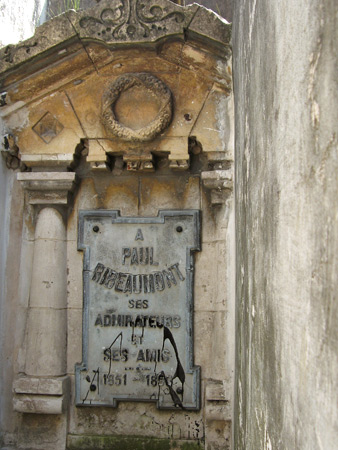
The tombstone below is simple & lacks decoration like some of the Irish ones. The text reads, “Ici réposé Alphonse Huppé, Né le 3 7bre 1820, décédé le 15 Aout 1858 / Priez pour lui” (Here lies Alphonse Huppé, born 03 Sept 1820, died 15 Aug 1858 / Pray for him). Oddly enough, the ground in front of the tombstone has been used at different times to grow green bell peppers by someone with a bizarre sense of humor. At the time of this post, nothing was being harvested:
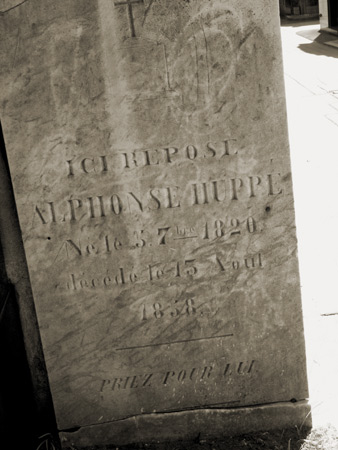
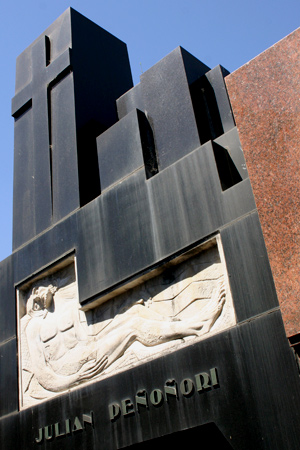
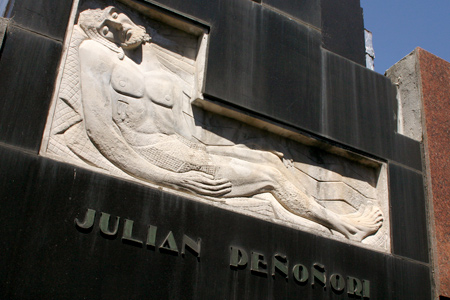
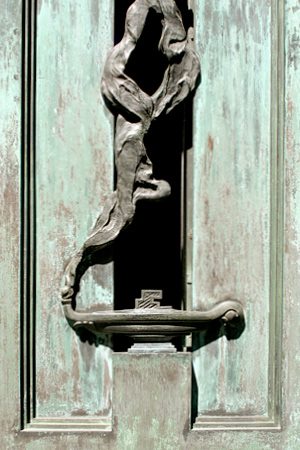
No biography or other info found online. Not a single plaque on the exterior either, but one of my favorite Art Deco designs in the cemetery.
2 CommentsBravery & strength are character traits commonly identified with lions. Used historically to decorate coats-of-arms of several royal families, even pop culture praises lion-like qualities in “The Wizard of Oz” & “The Lion King.” What better animal to protect loved ones during difficult times? A few large felines blend in with their domesticated relatives in Recoleta Cemetery.
